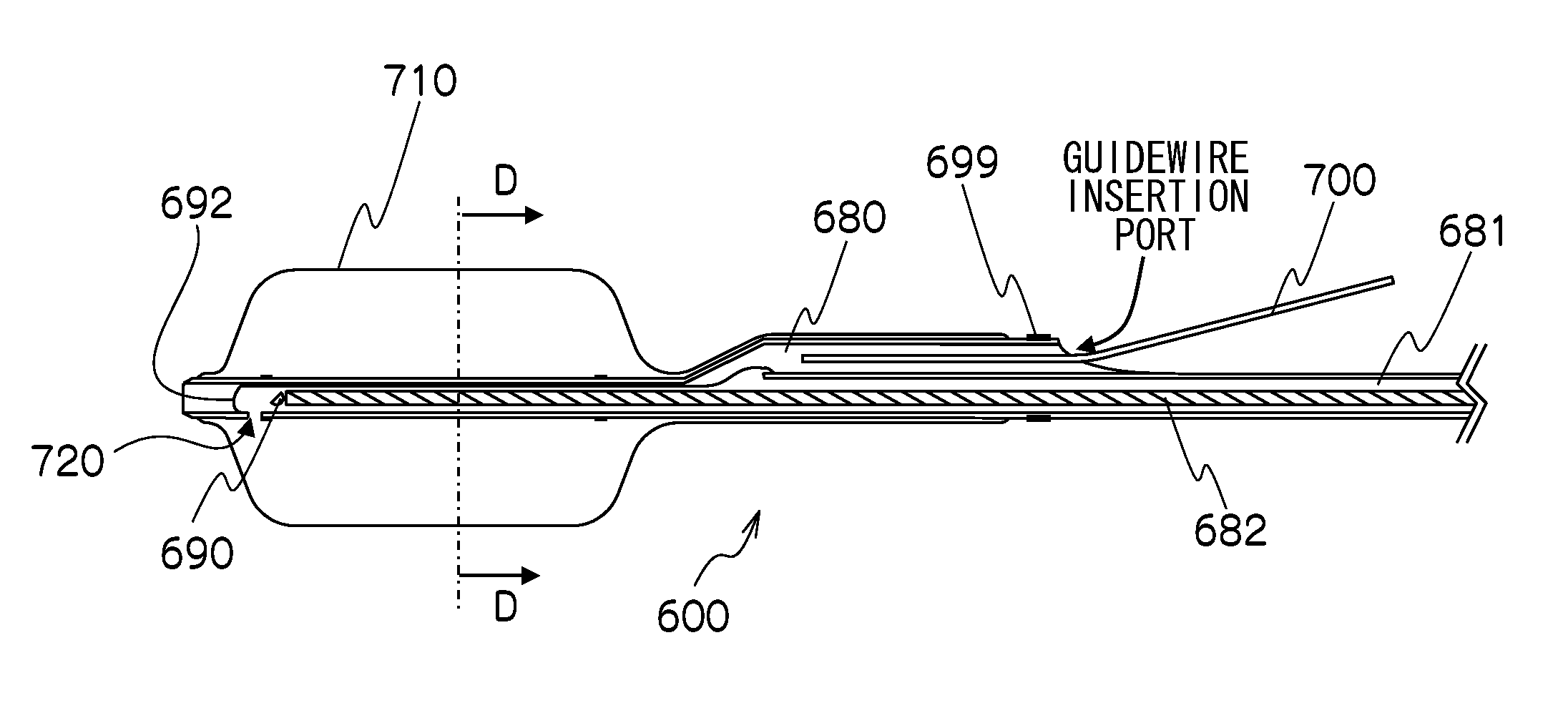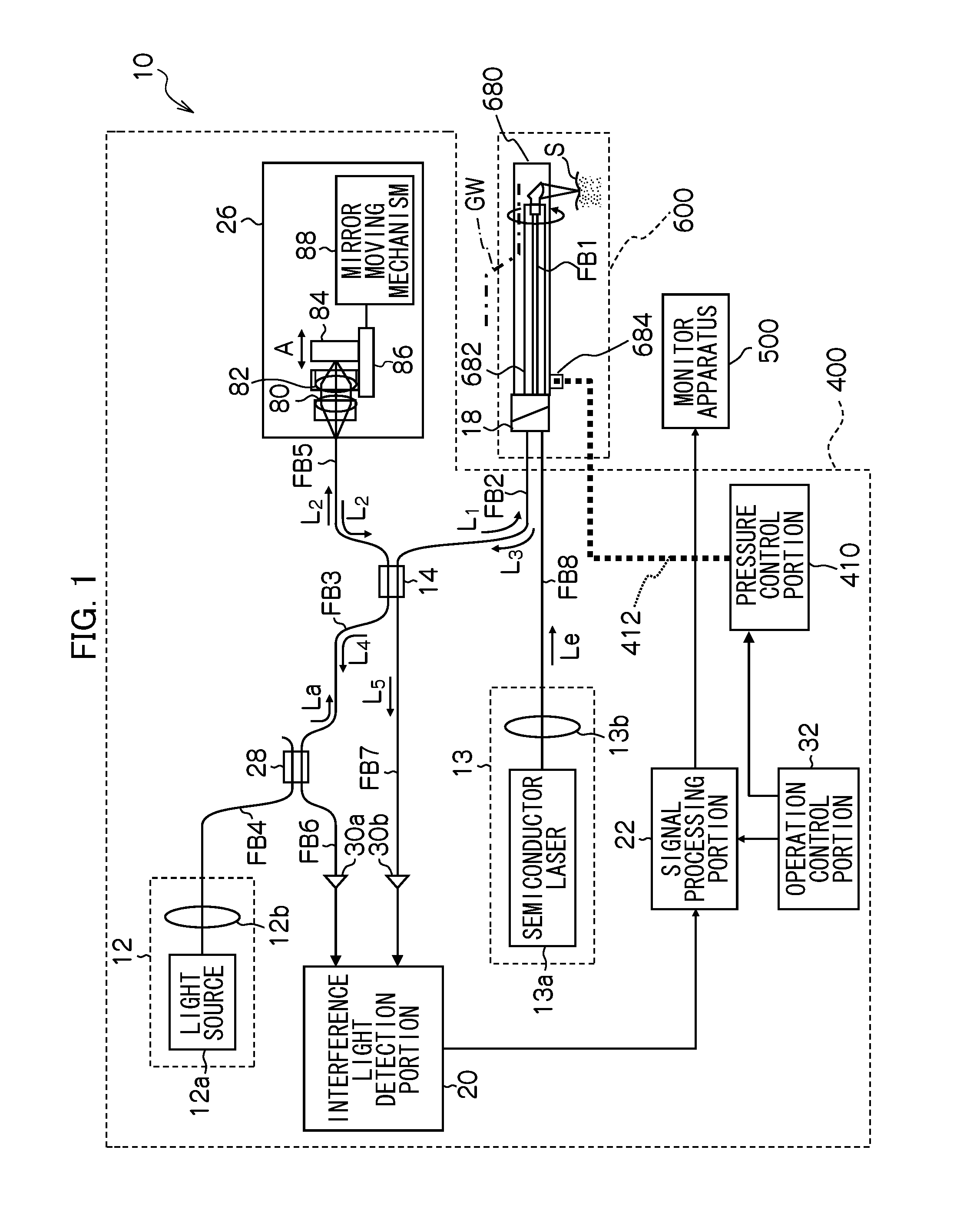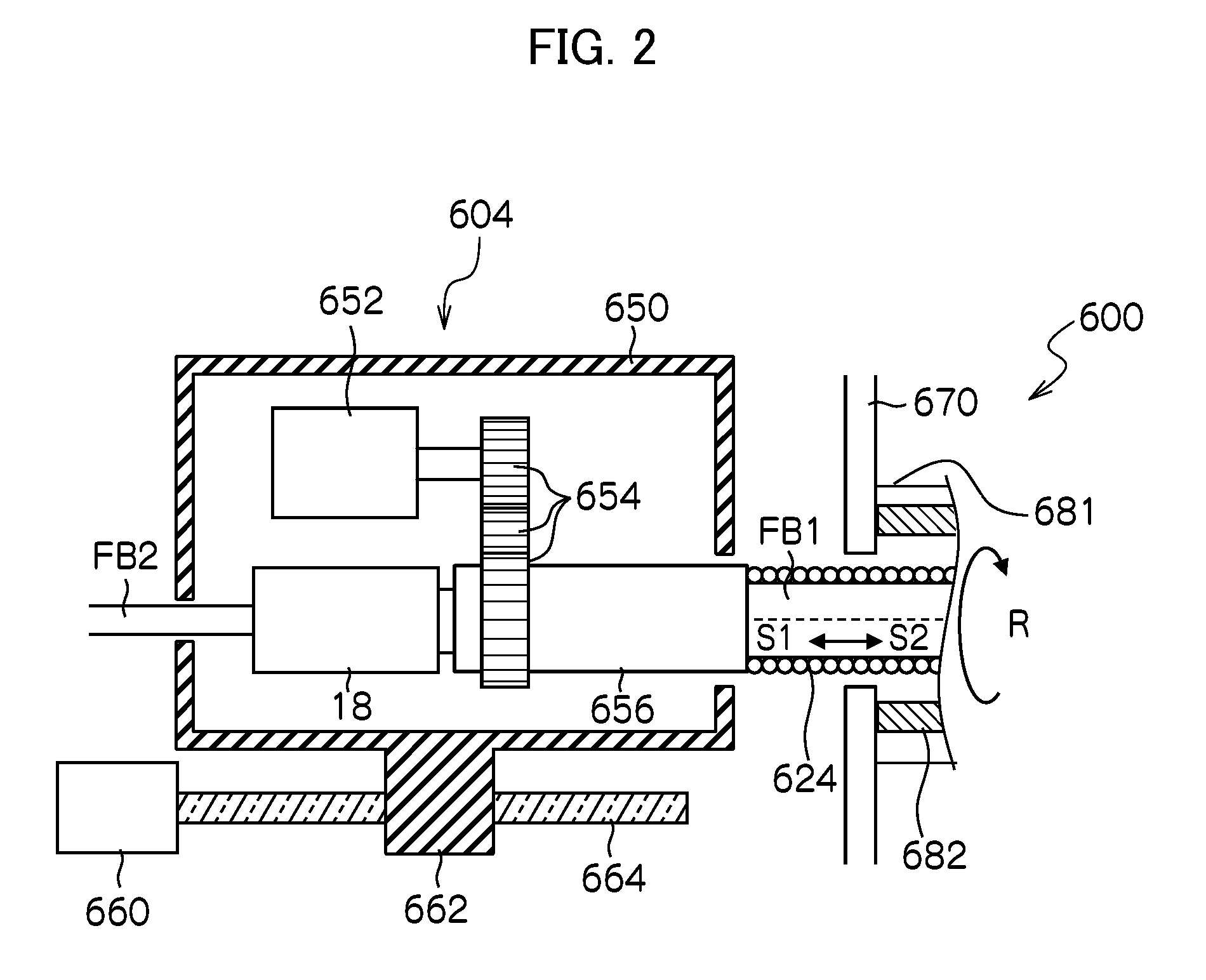Optical probe and endoscope apparatus
an endoscope and optical probe technology, applied in the field of optical probes and endoscopes, can solve the problems of not being able to observe the cross section not being able to dispose of optical components, and not being able to observe the image of the distal end portion
- Summary
- Abstract
- Description
- Claims
- Application Information
AI Technical Summary
Benefits of technology
Problems solved by technology
Method used
Image
Examples
first embodiment
First, an embodiment (first embodiment) relating to the first invention is described.
As shown in FIG. 1, an OCT probe 600 and an OCT processor 400 of the present embodiment are used for acquiring an optical tomographic image of an object to be measured by using the optical coherence tomography (OCT) technique.
[OCT Processor]
The OCT processor 400 includes a first light source (a first light source unit) 12 that emits a light La for measurement; an optical fiber coupler (a branching / multiplexing portion) 14 that branches the light La emitted from the first light source 12 into a measurement light (a first light flux) L1 and a reference light L2, and multiplexes a returning light L3 from an object to be measured S as a subject and the reference light L2, thereby generating an interference light L4; the OCT probe 600 including a rotation-side optical fiber FB1 that guides the measurement light L1 that is branched at the optical fiber coupler 14 to the object to be measured and guides th...
second embodiment
Next, an embodiment (second embodiment) relating to a second invention is described. Hereunder, a description regarding portions that are common with the first embodiment is omitted, and the description centers on characteristic portions of the present embodiment.
FIG. 8 is a sectional view that illustrates the sheath portion of the OCT probe according to the second embodiment. In this connection, in FIG. 8 and FIGS. 9 to 16 that are described later, components that are the same as or similar to components of the first embodiment (FIG. 3 to FIG. 5) are designated by the same reference numerals.
The sheath portion of the OCT probe 600 is a principal component according to the second embodiment. As shown in FIG. 8, the sheath portion of the OCT probe 600 according to the second embodiment includes the imaging core lumen 681 that houses the imaging core therein (extending) along the longitudinal axis of the sheath portion of the OCT probe 600, the guidewire lumen 680 that is disposed app...
modification example 1
FIG. 14 is a cross-sectional schematic diagram of modification example 1 of the present embodiment. Modification example 1 illustrates a difference from the present embodiment. When the balloon 710 illustrated in the present embodiment is expanded at a fragile lesion part, there is a risk of damaging the lesion part. Therefore, according to modification example 1, a configuration is adopted such that a diameter φX at both ends of the balloon 710 is greater than a diameter φY at a center part thereof (φX>φY; for example, X=10 mm and Y=12 mm), a distance from the observation target is secured with the diameter φX at both ends of the balloon 710, and an area scanned by the ball lens 690 (axial direction scanning area) does not closely contact a lesion.
PUM
 Login to View More
Login to View More Abstract
Description
Claims
Application Information
 Login to View More
Login to View More - R&D
- Intellectual Property
- Life Sciences
- Materials
- Tech Scout
- Unparalleled Data Quality
- Higher Quality Content
- 60% Fewer Hallucinations
Browse by: Latest US Patents, China's latest patents, Technical Efficacy Thesaurus, Application Domain, Technology Topic, Popular Technical Reports.
© 2025 PatSnap. All rights reserved.Legal|Privacy policy|Modern Slavery Act Transparency Statement|Sitemap|About US| Contact US: help@patsnap.com



